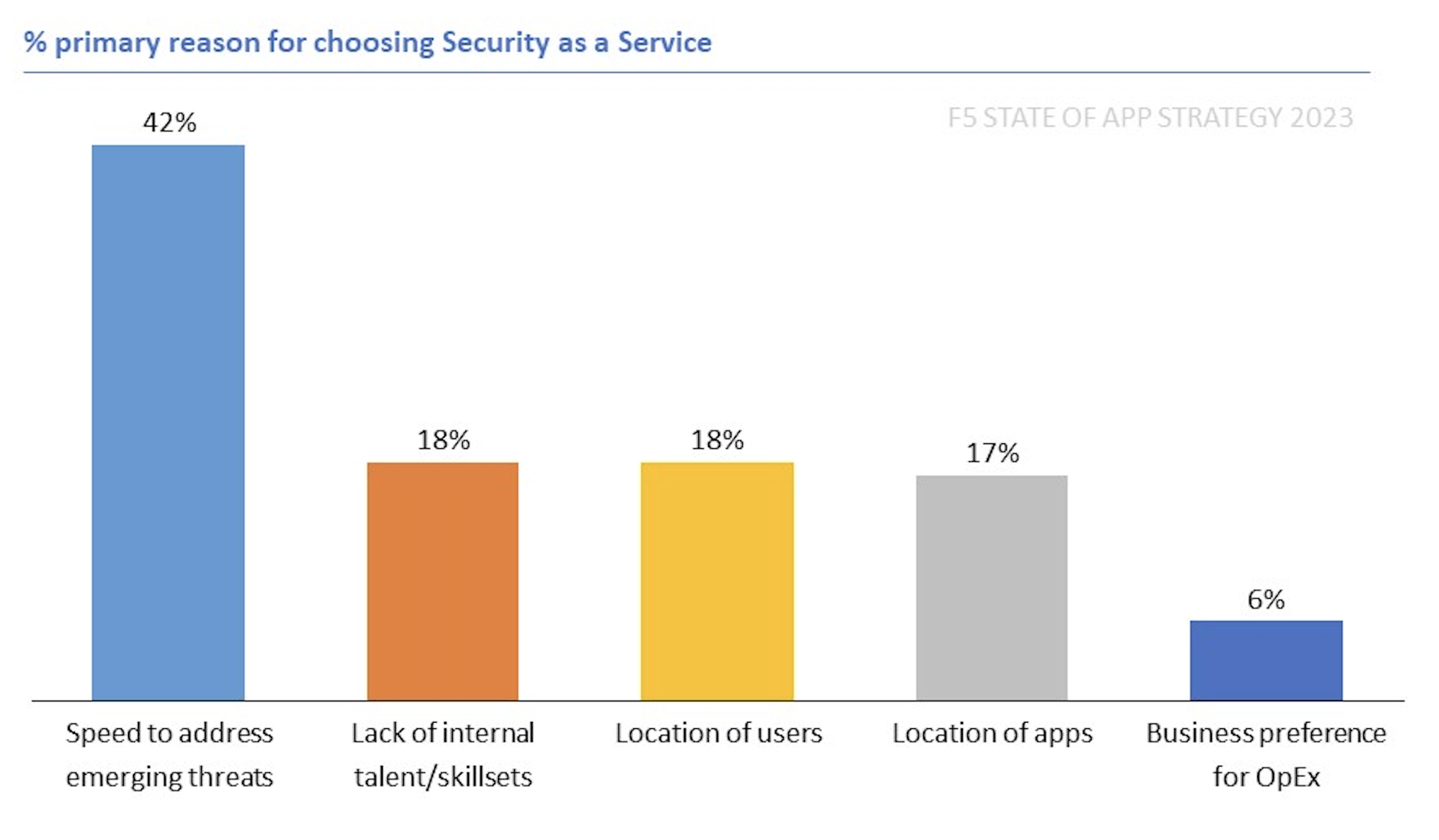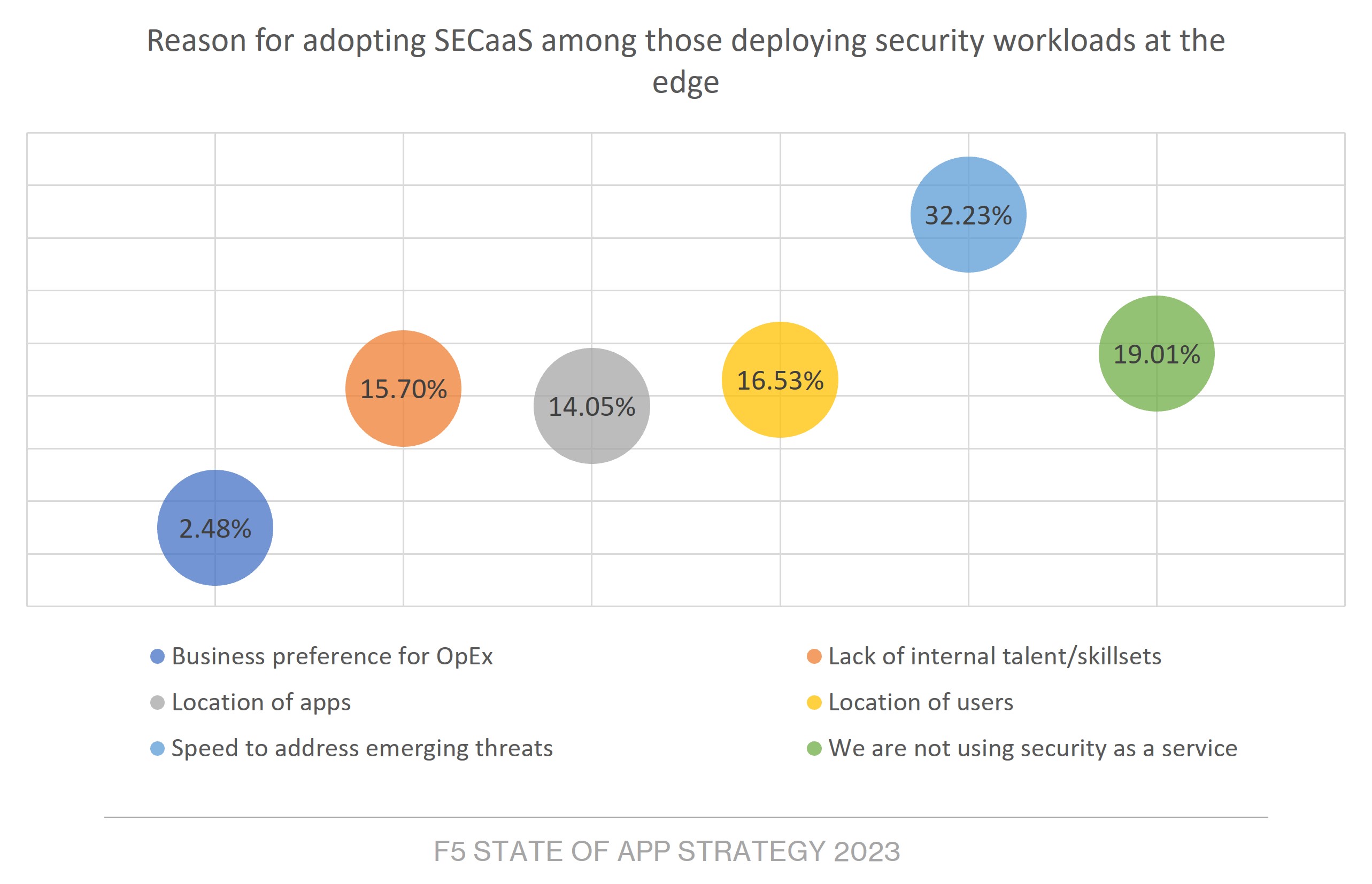Estado de la estrategia de aplicaciones 2023: Seguridad a su servicio. Literalmente.
Hay dos tipos de velocidad con los que los profesionales de la seguridad tienen dificultades. El primero está relacionado con el rendimiento y el equilibrio entre la necesidad de responder rápidamente a las solicitudes y la necesidad de proteger tanto a los usuarios como a los activos corporativos de la explotación. Esta lucha es fundamentalmente una lucha de gestión de riesgos. Como descubrimos el año pasado en nuestra investigación anual , de hecho, una pluralidad de organizaciones están dispuestas a sacrificar la seguridad a cambio de alguna mejora definida en el rendimiento.
Pero hay otro tipo de velocidad con el que los profesionales de seguridad (y las empresas a las que sirven) tienen dificultades. Es decir, la velocidad para abordar las amenazas emergentes. Ya sabes, exploits de día cero de vulnerabilidades. Ataques DDoS dirigidos a redes, aplicaciones y API que aparecen de la nada.
Sabemos por otras investigaciones de la industria que cuando se trata de reparar vulnerabilidades, existe una brecha importante entre el descubrimiento y el cierre que deja a las empresas vulnerables a los ataques. También sabemos que impulsar las políticas adecuadas para abordar los ataques DDoS a los sistemas y servicios adecuados también puede llevar tiempo que, en el mundo de los negocios digitales, cuesta dinero real.
Por eso, no fue una sorpresa cuando preguntamos a los encuestados en nuestra encuesta sobre el estado de la estrategia de aplicación 2023 sobre las razones por las que están adoptando la seguridad como servicio (SECaaS).
La respuesta abrumadoramente fue “velocidad”.
Esta necesidad de velocidad está afectando las decisiones sobre dónde implementar las cargas de trabajo. Por primera vez en nuestros nueve años de historia realizando esta investigación, vimos que los servicios de seguridad se implementaron fuera de las instalaciones (36%) a una tasa ligeramente mayor que en las instalaciones (35%). Ninguna otra categoría de servicios de distribución de aplicaciones se acerca siquiera a la paridad. ¿Pero la seguridad? La seguridad se está implementando en la nube pública y como servicio en cantidades cada vez mayores.
Y cuando analizamos los tipos de cargas de trabajo que los encuestados planeaban implementar en el borde, probablemente no sea una sorpresa que quienes planeaban implementar cargas de trabajo de servicios de seguridad etiquetaran la "velocidad para abordar amenazas emergentes" como la principal razón para adoptar SECaaS.
Nada de esto debería ser una sorpresa. Uno de los beneficios operativos de adoptar SECaaS, ya sea tradicional o en el borde, es la velocidad con la que los proveedores pueden abordar las amenazas emergentes. Pero también es bueno para el rendimiento. Acercar los servicios de seguridad al usuario (lo que incluye a actores maliciosos que se hacen pasar por usuarios) significa detectar y neutralizar las amenazas antes, lo que evita que saturen las aplicaciones, API y servicios de destino.
Y como saben los lectores, el axioma operativo número dos establece que “a medida que aumenta la carga, el rendimiento disminuye”. Entonces, si algún servicio o sistema en la ruta crítica (entre el usuario y la aplicación/API) se ve repentinamente abrumado por un ataque, su carga aumenta a medida que intenta abordarlo. A medida que aumenta la carga… el rendimiento disminuye.
Al impulsar la responsabilidad de detectar y neutralizar ataques en el borde, las empresas obtienen efectivamente beneficios de "velocidad": el tiempo de respuesta a ataques emergentes y el rendimiento en tiempo real de las aplicaciones y API.
Ahora bien, también es cierto que no todas las funciones de seguridad son adecuadas para un entorno “como servicio” o en el borde. Pero cuando se trata de protecciones como DDoS y WAAP, es absolutamente cierto que “como servicio” y en el borde son buenas opciones para optimizar ambos tipos de velocidad: operativa y de tiempo de ejecución. Esa es una de las razones por las que es cada vez más importante que el diseño de un servicio digital incluya tanto la entrega de aplicaciones como consideraciones de seguridad en el momento del diseño .
Una de las formas en que las organizaciones logran esto es adoptando un enfoque de plataforma para la seguridad. No arruinaré nuestros hallazgos sobre ese tema profundizando aquí, pero puedes leer sobre ellos en nuestro Informe sobre el estado de la estrategia de aplicación de 2023 .
Manténgase a salvo ahí fuera.


